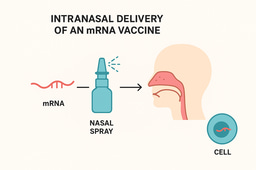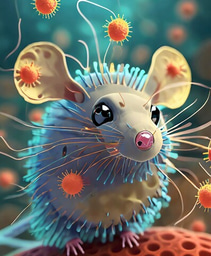Sickly Sweet
Published in Microbiology

Chronic Obstructive Pulmonary Disease (COPD) describes a
group of lung conditions that make it hard to breath. The major cause of COPD is
smoking. Nearly 1.2 million people in the UK suffer with COPD, costing the NHS
more than £800 million a year. Bacterial lung infections are particularly common
in COPD patients. There are a number of reasons that COPD patients are more
susceptible to infection but most research has focussed on failures of the
immune system. We propose an alternative mechanism in our latest paper in the
Journal of Allergy and Clinical Immunology (JACI).
Bacteria, like all living things, need food to grow. The
bacteria that infect us are no exception to this and their food source is us!
The airways are surprisingly rich in nutrients for bacterial growth, some of
this comes from the food we eat (micro-inhalation) and some leaks out from the
blood or cells lining the airways. In healthy lungs, glucose is actively pumped
out of the lungs maintaining it at a low level, but in damaged lungs the flow
of sugar into the lungs exceeds the amount of sugar that can be pumped back out.
Using model systems we have linked this increased lung glucose to increasedlung infection.
We think that this works a little like leaving a jam jar open – bacteria can colonise and grow on the available sugar.
We have now extended these results to patients with COPD. We
measured glucose in samples from COPD patients and found that airway glucose was
higher compared to individuals without COPD. Moreover when COPD patients had an
acute viral infection of the lungs (called an exacerbation) the glucose
concentrations were even higher, probably because the virus further damages the
lung. There was also a direct relationship between the amount of glucose and
the amount of bacteria in the COPD patient samples. We think that
mechanistically, the glucose is elevated because of lung inflammation –
essentially COPD lungs are more leaky, the glucose moves from the blood into
the airways with an impact on bacterial growth.
Why is this important?
Antibiotics are commonly used to treat infections in COPD,
contributing to the rise in antibiotic resistance. Antibiotic resistant
bacteria (bacteria that are not killed by antibiotics) are a crisis in global
health. If antibiotics stop working, as well as an increase in the severity of
infections that are treatable, much of the medical advances of the last 50
years including surgery and transplants also become ineffective. We therefore
need new ways of killing bacteria. Demonstrating that bacteria are need the
sugar in the airways to grow opens up a new line of attack, cut off the
bacteria’s source of sugar. Potentially this would prevent bacterial infections
in the first place, circumventing the need for antibiotics.





Please sign in or register for FREE
If you are a registered user on Research Communities by Springer Nature, please sign in